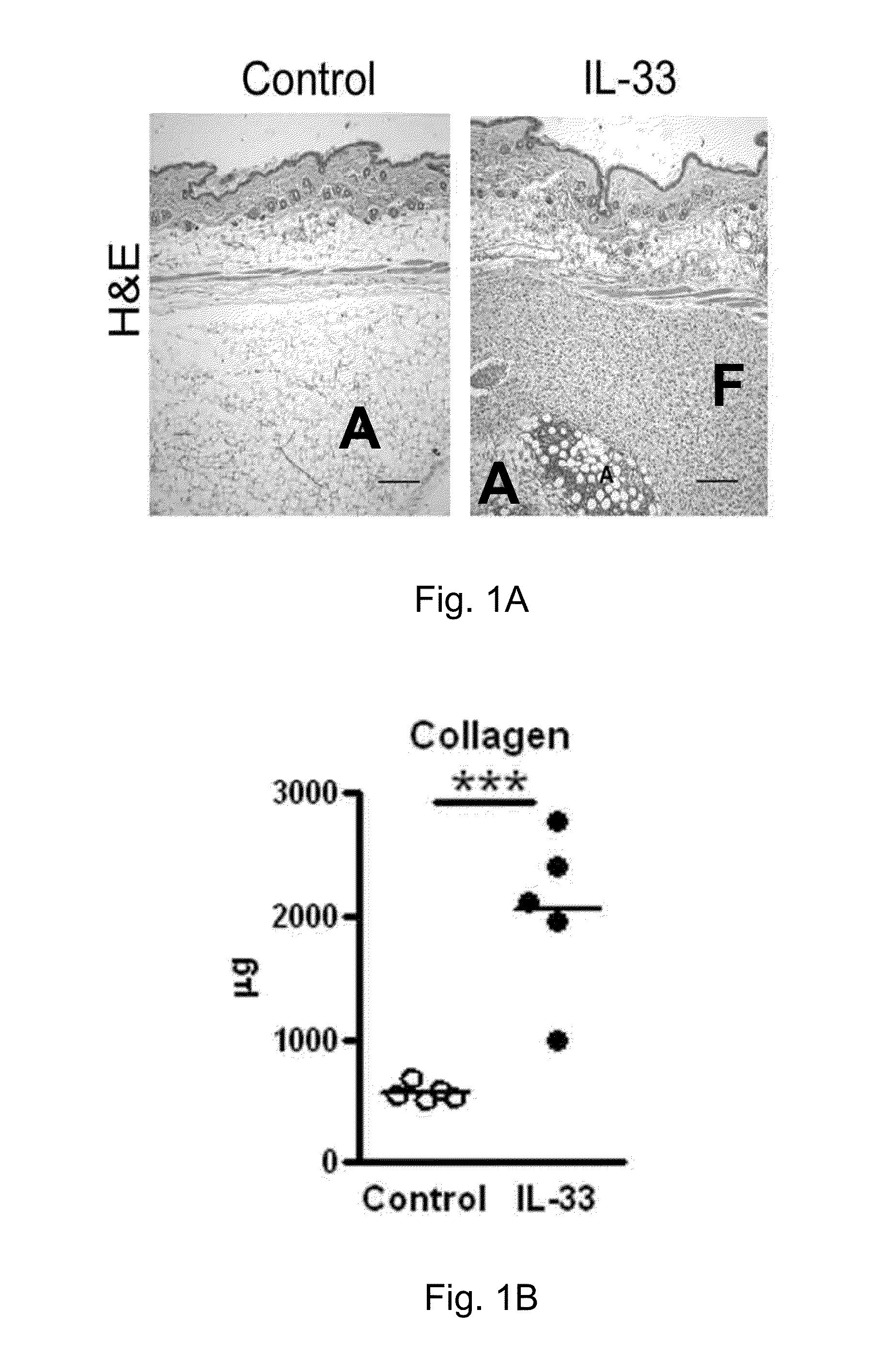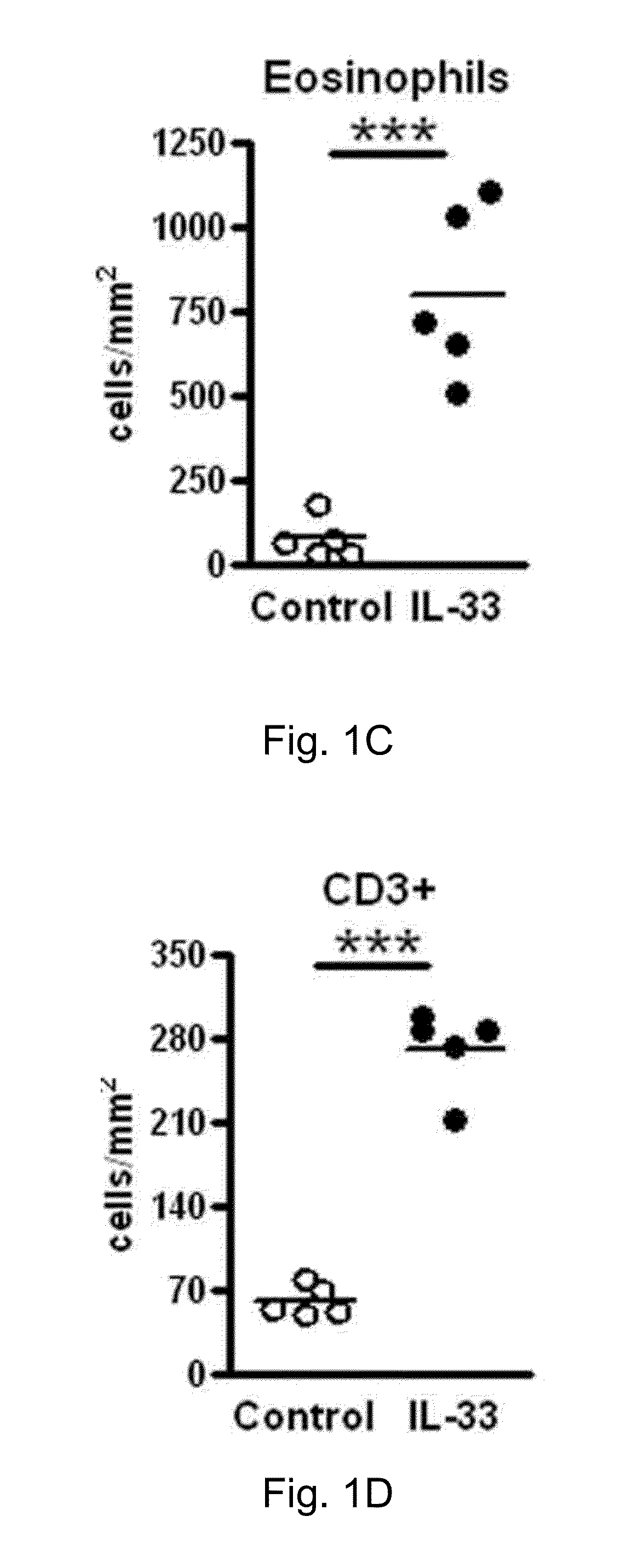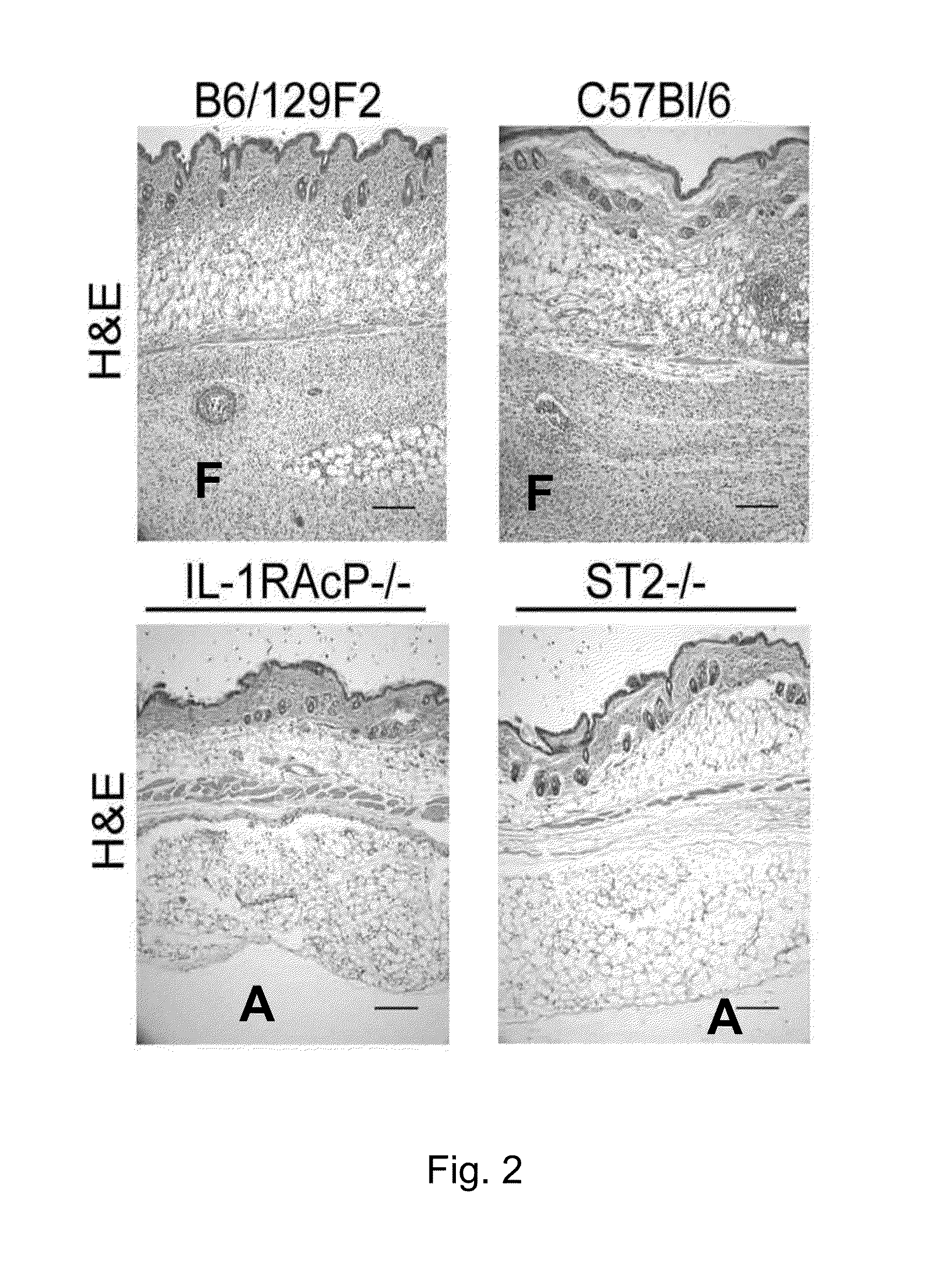Use of il-33 antagonists to treat fibrotic disease
a technology of il-33 and fibrotic disease, which is applied in the field of treating fibrotic disease, can solve the problems of fibrotic cascade cellular and molecular factors that remain poorly understood, hidebound skin, and impaired organ function
- Summary
- Abstract
- Description
- Claims
- Application Information
AI Technical Summary
Benefits of technology
Problems solved by technology
Method used
Image
Examples
example 1
General Methods
[0061]Standard methods in molecular biology are described. Maniatis et al. (1982) Molecular Cloning, A Laboratory Manual, Cold Spring Harbor Laboratory Press, Cold Spring Harbor, N.Y.; Sambrook and Russell (2001) Molecular Cloning, 3rd ed., Cold Spring Harbor Laboratory Press, Cold Spring Harbor, N.Y.; Wu (1993) Recombinant DNA, Vol. 217, Academic Press, San Diego, Calif. Standard, methods also appear in Ausbel et al. (2001) Current Protocols in Molecular Biology, Vols.1-4, John Wiley and Sons, Inc. New York, N.Y., which describes cloning in bacterial cells and DNA mutagenesis (Vol. 1), cloning in mammalian cells and yeast (Vol. 2), glycoconjugates and protein expression (Vol. 3), and bioinformatics (Vol. 4).
[0062]Methods for protein purification including immunoprecipitation, chromatography, electrophoresis, centrifugation, and crystallization are described. Coligan et al. (2000) Current Protocols in Protein Science, Vol. 1, John Wiley and Sons, Inc., New York. Chemi...
example 2
Methods Specifically Related To the Experiments Described Herein
[0067]Animals and animal experiments were as follows. B6 / 129.IL-1RAcP− / −, B6.IL-1R1− / −, B6.RAG− / − and 129S6.IL-13− / − mice were housed in specific pathogen free conditions at Schering-Plough Biopharma according to IACUC guidelines. Cullinan (1998) J. Immunol. 161:5614-5620; Mombaerts et al. (1992) Cell 68:869-877; Glaccum et al. (1997) J. Immunol. 159:3364-3371; McKenzie et al. (1998) Curr. Biol. 8:339-342. B6.ST2− / − mice were a kind gift from the Neurath lab, University of Mainz; Hoshino et al. (1999) J. Exp. Med. 190:1541-1547. BALB / c.Δdb1GATA, WB / B6F1.cKitw / v, B6.IL-4− / − and appropriate control mice were obtained from the Jackson laboratories. Yu et al. (2002) J. Exp. Med. 195:1387-1395; Metwali et al. (1996)J. Immunol. 157:4546-4553. B6 / 129 mice were obtained from the Jackson laboratories. C57B1 / 6 and 129S6 mice were obtained from Taconic. Age and sex matched mice of 8 to 16 weeks of age were used for the experiments...
example 3
IL-33 Mediated Induction of Skin Fibrosis And Inflammation
[0074]To assess the consequences of dysregulated IL-33 release in skin IL-33 or control protein (MSA) was injected subcutaneously every day for 7 days. IL-33 and MSA injected mice did not exhibit any discernible changes in behavior over the course of the injection series (e.g. pruritus) nor was any overt skin pathology observed. Nevertheless, histological analysis of skin from IL-33- but not MSA-injected mice revealed prominent inflammation and edema at the injection site (FIG. 1A) and development of subcuticular fibrosis as evidenced by Masson's Trichrome staining (not shown). Soluble collagen levels were increased approximately 4-fold in skin punch biopsies obtained from IL-33-injected mice (FIG. 1B). The majority of infiltrating leukocytes consisted of granulocytic leucocytes with dense clusters of these cells occasionally observed in subcutaneous adipose tissue (FIG. 1A). Histochemical staining revealed that the majority ...
PUM
| Property | Measurement | Unit |
|---|---|---|
| area | aaaaa | aaaaa |
| pH | aaaaa | aaaaa |
| soluble | aaaaa | aaaaa |
Abstract
Description
Claims
Application Information
 Login to View More
Login to View More - R&D
- Intellectual Property
- Life Sciences
- Materials
- Tech Scout
- Unparalleled Data Quality
- Higher Quality Content
- 60% Fewer Hallucinations
Browse by: Latest US Patents, China's latest patents, Technical Efficacy Thesaurus, Application Domain, Technology Topic, Popular Technical Reports.
© 2025 PatSnap. All rights reserved.Legal|Privacy policy|Modern Slavery Act Transparency Statement|Sitemap|About US| Contact US: help@patsnap.com



